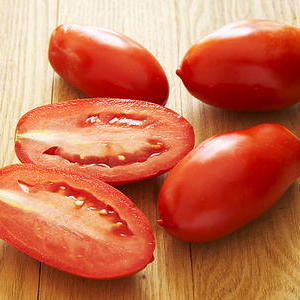Ingredients
Equipment
Method
- Core the fresh plum tomatoes, make a small 'X' incision on the bottom of each, and blanch them briefly in boiling water (about 30 seconds) before transferring to an ice bath to stop cooking. Peel and roughly chop the tomatoes.
- In a large pot or Dutch oven, melt the unsalted butter or heat the extravirgin olive oil over medium heat.
- Add the grated carrot and finely sliced or chopped onion to the pot and sauté gently until softened and translucent, about 5-7 minutes, without browning.
- Add the roughly chopped tomatoes, torn basil leaves, and salt to the pot. Stir to combine.
- Bring the mixture to a gentle simmer, then reduce the heat to low, cover partially, and let it cook for 30-40 minutes, stirring occasionally, until the tomatoes have completely broken down and the sauce has thickened slightly.
- Remove the pot from the heat. Using an immersion blender, carefully puree the sauce directly in the pot until it reaches your desired consistency, or transfer to a regular blender and blend in batches.
- For an exceptionally smooth sauce, pass the pureed mixture through a fine-mesh sieve, pressing firmly on any solids with a spatula to extract all the liquid. Discard the remaining pulp and seeds.
- Return the strained sauce (if applicable) to the pot, taste, and adjust the salt if necessary.
- Gently reheat the sauce if serving immediately.
- Serve warm, garnished with additional fresh basil leaves.
Notes
For the best flavor, always opt for the ripest, sweetest vine-ripened plum tomatoes available. Blanching and peeling the tomatoes ensures a smoother texture without any skin fragments, which can be further refined by passing the pureed sauce through a fine-mesh sieve. The small amount of grated carrot and finely chopped onion are crucial; they slowly cook down to provide a subtle, natural sweetness and depth, balancing the tomato's acidity without overpowering it. Choose high-quality unsalted butter for richness or an excellent extra virgin olive oil for a lighter, more vibrant profile. Always taste and adjust seasoning (salt) at the end, as the flavors develop during simmering.
